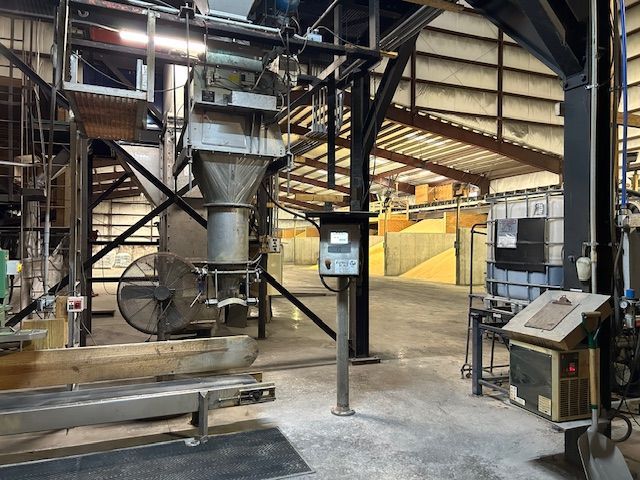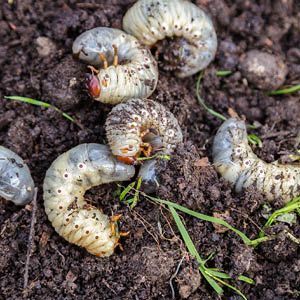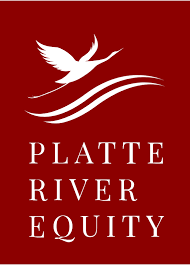UNDERSTANDING HERBICIDES
The term herbicide, well known by the turf industry for years, are chemicals that can be applied to fertilizer that can kill or change the normal growth of weeds, but do you know the difference between all the herbicides on the market? Because there are a variety of herbicide options available, it’s important to understand them prior to purchase in order target a particular problem and get the results you'r looking for.
THE BASICS OF HERBICIDES
Herbicides will fall into two categories; pre-emergent
or post-emergent. As the name alludes, pre-emergent herbicides should be applied prior to weed germination and/or emerging weeds so that it can form a chemical barrier in the soil to protect the turf from infestation. Post-emergent herbicides are applied after the weeds have already germinated and emerging from the soil. Pre-emergent herbicides can be applied as a liquid, a granular or with a fertilizer (combo) and watered into the soil to activate the weed prevention feature. Post-emergent herbicides are usually foliar applied, meaning the chemical must come in contact with leaf or petal and be absorbed by the weeds in order to kill the weed. Often times this is a less effective method because the chemical can be washed off leaves by rainfall or irrigation before it can be absorbed.
On top of being pre- or post-emergent, herbicides can either be, selective and nonselective. Selective herbicides target particular weeds without damaging surround turf or plants, while, non-selective herbicides kill all plants, including turf grass. Non-selective herbicides should be applied to weeds that are actively growing and excessively invading your lawn. Non-selective herbicides are ideal for spot treatment of existing weeds, but caution must be used as desired turf will also be killed.
- TIP: Non-selective herbicides are great to use along an overgrown fence or between the cracks in a driveway and selective herbicides are best to remove weeds within your lawn. A good rule of thumb to remember, if the area is overrun with 50% weeds, a non-selective herbicide may be your best choice, understand though that you will most likely need to reseed.
TIMING IS EVERYTHING
Timing is crucial when applying an herbicide, especially pre-emergents. Pre-emergent need to be applied prior to a weed seed germination; but how does one know when a weed is going to germinate? One must have an understanding of what weed is the persistent issue and learn when and at what temperature it begins to grow in order to prevent the weed from sprouting. Two ways to determine germination is monitoring soil temperatures on site (where you will apply treatment) or with phenology. As SportsField Management Magazine states in their article, “Crabgrass and Goosegrass Control”, phenology is a technique that refers to using temperature as a basis of a predictive method because plant growth and development is based on temperature. This technique can provide useful information to predict weed emergence by monitoring growth patterns in conjunction with calculating degree-day accumulations. It is important to note that when using phenology, the plant does not emerge at a certain degree point but rather at a range of degree-days, for example, crabgrass, a C4 annual grassy weed, germinates in early spring at a temperature around 50-55 degrees. In SportsField Management Magazine’s same article, “Crabgrass and Goosegrass Control”, they bring light to a study done that found that crabgrass germinated within a degree day range of 42-78 degrees. With phenology, one can develop models as a guide to help target pre-emergent herbicide applications in specific region.
- NOTE: Pre-emergents applied after initial weed germination can still provide benefits to prevent additional weeds from emerging, however, the current germinated weeds will most likely mature and not provide desired results. Its recommended to address the problem with a specialty herbicide, like Dimension, that combines both pre-emergent with a post-emergent herbicide if weeds have already germinated.
TYPES OF PRE-EMERGENT AND POST- EMERGENT TECHNOLOGIES
There are many different pre- and post- emergent technologies available. The different technologies can affect the window of application as well as effectiveness. It is important to apply them at the right time and identify which weeds you want to target to get the best results.
PRE-EMERGENTS
- Dimension - Controls 47 grassy and broadleaf weeds, Longer application window
- Atrazine - Recommended for southern regions on St. Augustine Grass and Centipede Grass
- Prodiamine - (Barricade equivalent) is known to be the longest-lasting, and most economical due to lowest application rates.
POST-EMERGENTS
- Lock-Up - Superior efficacy, can be applied anytime of year, can be applied to warm- & cool-season turf.
- Lazer - Contains three key active components, Dicamba, 2-4D, and MCPP. The combination of these three offer effective post control of more than 40 different weeds.
GLOSSARY
- C4 plants - Warm-season; tropical plants that reduce carbon dioxide captured during photosynthesis to useable components by first converting carbon dioxide to oxaloatcetate, a 4-carbon acid
- C3 Plants - Cool-season; temperate plants that reduce (fix) CO2 directly by the enzyme ribulose bisphosphate carboxylase (RUBPcase) in the chloroplast resulting in a reaction between CO2 and ribulose bisphophate, a phosphorylated 5-carbon sugar, forms two molecules of a 3-carbon acid called 3-phosphoglyceric acid
For professional fertilizers, humic and AMP-XC™ enriched products available, please visit TurfCare’s online Product Catalog.
For green industry professionals or others interested in ordering Turfcare products, please contact our Customer Service
to find a distributor near you.
References:
http://plantscience.psu.edu/research/centers/turf/extension/factsheets/weed-management/chemical-weed-control
http://www.midway.kstate.edu/livestock/docs/What%20is%20the%20difference%20between%20C3%20plants%20and%20C4%20plants.pdf
https://www.bayeradvanced.com/articles/understanding-weed-killers
https://extension.illinois.edu/hortihints/0406d.htm
https://extension.umd.edu/sites/default/files/_images/programs/hgic/Publications/HG101%20Guide%20to%20Controlling%20Weeds%20in%20Cool%20Season%20Turf.pdf
Turf Care Supply - TurfReport Blog

Turf Care Supply, LLC, a portfolio company of Platte River Equity, has officially acquired Beaty Fertilizer, the industry respected Tennessee-based manufacturer and blender of custom granular and liquid fertilizers, as well as combination products. This strategic move expands Turf Care’s manufacturing footprint, adds new product capabilities, and enhances overall production capacity. “The partnership with Beaty Fertilizer marks a major milestone in our journey and an important step forward in our mission to grow, innovate and lead in our industry,” said Mark Mangan, President of Turf Care. “This acquisition is more than just expansion; it’s a powerful opportunity to strengthen our product offerings, broaden our market reach and provide greater value to our customers. By welcoming Beaty into the Turf Care family, we are reinforcing our commitment to excellence and positioning ourselves for an even brighter future.” “We are excited about this next step in the Beaty Fertilizer story. For almost 50 years, our family and our employees have worked hard to serve customers and communities with pride and heart,” said John Beaty, President of Beaty. “Now, we are embracing an opportunity for growth with Turf Care. With our combined know-how and resources, we’ll keep building on what we’ve worked so hard to create and bring even more value to our customers, employees and partners. We truly believe this partnership will keep the Beaty legacy going strong while opening up new doors for growth and innovation.” Tarun Kanthety, Vice President at Platte River, added, “We believe the acquisition of Beaty Fertilizer represents a strategic step in expanding Turf Care’s footprint and product breadth... as it scales and enhances its value proposition to customers.”

Root out Grubs, Before they Attack Yours! White grubs, the immature stage of several scarab beetles—including Japanese beetles, masked chafers, May and June beetles, and green June beetles—are a major threat to turfgrass across the Southeast. These beetles follow a complete metamorphosis (egg, grub, pupa, adult), with most species completing their cycle in one year. Eggs are laid in early summer, grubs hatch within two weeks, and begin feeding on turfgrass roots through the late summer and fall. May and June beetles differ slightly, with a two- to three-year life cycle and prolonged feeding as third-instar grubs. Grubs damage turf by severing roots, causing grass to yellow, wilt, or lift easily from the soil. Feeding is typically concentrated in patches and worsens during hot, dry weather. Wildlife digging for grubs can create further turf destruction. Healthy turf may tolerate 5–10 grubs per square foot, but damage becomes evident as populations rise or turf is under stress. Early detection and timing are essential. Scouting begins in late June, shortly after adult beetle activity peaks. Monitoring plants favored by beetles can signal egg-laying is underway. Treatment is most effective when small grubs are active—typically from mid-July through early August. For professional turfgrass managers, insecticides containing imidacloprid (Merit®), chlorantraniliprole (Acelepryn®), or trichlorfon (Dylox®) are the most effective tools. The primary months of preventative application of Acelepryn® is from April to end of May and Merit® from April into July - targeting grubs before they hatch. Curative treatments with Dylox® or similar products are applied July through the fall, when young grubs are feeding and most vulnerable. Always follow label directions for optimal application and safety. Timing may vary slightly by regional seasonal needs. Turf Care Supply has a variety of professional TCS Growstar insecticide fertilizers available to protect your turf and prevent grub damage, before it starts. Click on the button below to view products, contact your sales rep for addition TC Growstar products available.

Platte River Equity Portfolio Company Turf Care Supply, LLC Acquires Agri-Nutrients, Inc. Brunswick, OH , October 9, 2024 – Platte River Equity (“Platte River”) portfolio company Turf Care Supply, LLC (“Turf Care”) is pleased to announce its acquisition of Agri-Nutrients, Inc. (“Agri-Nutrients”), a manufacturer and blender of custom granular fertilizers for the turf & ornamental (“T&O”) industry. This strategic acquisition provides Turf Care with an established presence in the south-central United States, an enhanced product portfolio and additional manufacturing capacity. “This acquisition represents much more than a business transaction; it is a strategic step forward in expanding our reach and enhancing our customers’ growth. By bringing Agri-Nutrients into the Turf Care family, we are broadening our product portfolio, expanding our market presence and further positioning ourselves as a leader in providing innovative solutions for our customers,” said Mark Mangan, President of Turf Care. “We are excited about joining the Turf Care team,” said Jim Montgomery, President of Agri-Nutrients. “At Agri-Nutrients, our core values center around customer service and product innovation, and we are confident that this combination will allow us to better serve the needs of our customers.” “Platte River welcomes the Agri-Nutrients team to Turf Care. This transaction underscores our long-term commitment to fostering growth through both organic and inorganic initiatives across the Turf Care platform,” said Tarun Kanthety, Vice President of Platte River. “The partnership with Agri-Nutrients strengthens Turf Care’s value-added offering, creating additional growth opportunities across the combined customer base.” B&A Corporate Advisors served as the exclusive financial advisor to Agri-Nutrients. About Agri-Nutrients Founded in 1992 and based in Catoosa, OK, Agri-Nutrients is a manufacturer and blender of custom granular fertilizers for the T&O industry, predominantly selling into the lawn care, sports turf and golf course end markets. About Turf Care Supply Established in 1974, Turf Care Supply is one of the largest formulators and blenders of urea products to the T&O market. Turf Care has a comprehensive product portfolio of fertilizers, combination products (herbicide/insecticide), soil amendments and enhanced efficiency fertilizer ingredients. Turf Care's products are sold to distributors and blenders serving the commercial, residential and golf end markets. Turf Care operates four manufacturing facilities strategically located throughout the eastern U.S. About Platte River Equity Founded in 2006 and based in Denver, CO, Platte River Equity is a private equity firm focused on investments in established lower middle market operating companies within targeted industrial sectors where it has substantial operating and investing experience. Platte River utilizes prudent capital structures in order to invest in future growth opportunities and withstand changing economic environments. The firm also provides significant ongoing support to its portfolio companies through dedicated resources across functional areas. The firm has raised funds with committed capital in excess of $1.6 billion and is currently investing out of its fifth fund. The Platte River team is the largest collective investor across its funds, deeply aligning the firm with its investors and portfolio company management teams.

